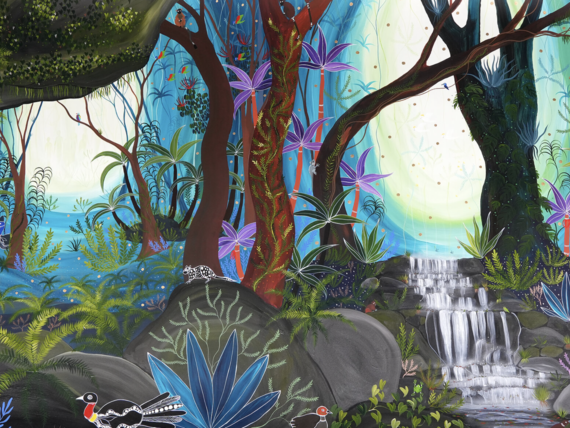Cairns Surf Lifesaving club horrified by shark drum line removal

Nippers on Cairns’ northern beaches will tomorrow return to the water for the first time since a court-ordered removal of shark drum lines.
In a move which has angered Surf Lifesaving leaders, the Federal Court this week upheld a decision by the Administrative Appeals Tribunal brought forward by the Humane Society International, which revoked Queensland’s permit to operate its Shark Control Program.
Instead of killing the sharks, the ruling means sharks would have to be tagged and released.
The State Government opted to remove the drum lines.
They were taken out yesterday.
Ellis Beach Surf Lifesaving Club, where the local Nippers program operates, was home to the state’s northern-most drum line.

Its President Lenny Wanklyn has told Tropic Now the court’s decision places swimmers in danger.
“Now they’re endangering the kids, the five clubs along the coastline, the lifeguard beaches and everyone is now at risk,” he said.
“You’re taking away the only barrier that we had.”
Ellis Beach is close to an area bordering Double and Scout Hat Islands which locals refer to as ‘shark alley’.
Latest available figures from 2017 show 15 tiger sharks were caught on drum lines off Cairns beaches in a 12 month period, eight of which were at Ellis Beach, Buchan’s Point and Palm Cove.
They included a 3.5 metre monster but Mr Wanklyn told Tropic Now a five metre tiger shark was caught more recently.
“This is a real concern, they’re the masters of attack,” he said.
“Those drum lines were put in for a reason.
“We will have to use more resources, put more IRBs (inflatable rescue boats) out there, do a lot more work to keep everybody safe.”
Queensland Minister for Agricultural Industry Development and Fisheries Mark Furner said the new restrictions on the program within the Great Barrier Reef Marine Park means it’s not possible to carry out shark control measures legally and safely.
“These changes, forced on Queensland by an animal activist group and supported by the Environment Defenders Office of New South Wales, would turn Queensland’s program from a ‘catch and remove the risk’ program to a ‘catch and release the risk’ program,” he said.
“Our shark control contractors and staff are neither trained nor equipped to safely handle live sharks, tow them away from beaches and then release them alive.
“Human life comes first.
“That’s why I won’t put our staff and contractors in harm’s way by asking them to perform dangerous work without being fully trained and equipped.”
Mr Furner is now working closely with Federal Environment Minster Sussan Ley as it seeks support in the form of updated legislation which would see the ban overturned.
“We agreed that human life was the top priority, and Ms Ley indicated that legislation changes were being looked at,” Mr Furner said.
“I’m pleased that, at this late hour, the Federal Government is now willing to examine its options for supporting the Shark Control Program.”
The data on shark drum line captures on the Northern Beaches
Tiger Sharks:
- 4 at Ellis Beach, ranging in length from 1.32m to 3.5m
- 4 at Holloways Beach, ranging in length from 1.2m to 3.62m
- 3 at Buchan's Point, between 2.18m and 2.48m long
- 2 at Trinity Beach, 0.98m and 2.2m long
- 1 at Clifton Beach, 2.65m long
- 1 at Palm Cove, 0.8m long
Other sharks caught:
- Australian blacktip at Buchan's Point
- 2 common blacktip whalers at Trinity Beach
- Hammerhead at Palm Cove
- Tawny shark at Yorkey's Knob
- Pig-eye whaler at Palm Cove
Source: 2017 - Shark Control Program catch statistics, Queensland Government data sets








